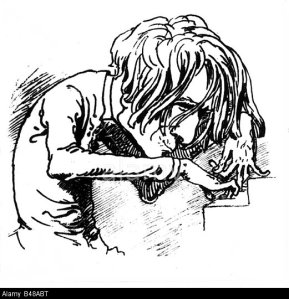That’s what the question said. Here’s my Quora answer:
This question cannot be satisfactorily answered. No matter how much evidence can be provided that he was or he wasn’t, there will always remain the question of personal taste and choice. But let’s try.
What evidence do we have?
Firstly, there are the works he left behind. Those who can play all of those are really top level pianists. Liszt’s piano music is extremely difficult. The 12 Transcendental Etudes Schumann thought would only ever be adequately performed by a maximum of twelve pianists in the world at any given time. The pages are black with notes, and only once various patterns have been cracked does it become clear that the music was written by a pianist who fully understands the movement of the hand over the keyboard and it is not totally impossible. But until that point it is tricky and requires immense technique.
Take a piece like La Campanella. I have never heard this performed as I imagine Liszt to have performed it. I am able to criticise weaknesses in the piece performed by even the world’s best pianists of today, and yet I still can imagine Liszt surmounting these.
The transcriptions he made, particularly the ones of Berlioz’s Symphonie Fantastique and Harold in Italy are said
to be in many places pretty much unplayable. The jumps, the chords, the speed etc. Could Liszt have played those sections? Hmmm…possibly…probably.
Secondly, there are the accounts of Liszt’s playing. In his lifetime of recital (a term he invented) playing, there are very, very few bad reviews, or even criticisms of his playing. 99% of critics are just gobsmacked by what they have heard. Although Liszt was a pioneer in piano technique and pianistic effect, he was nevertheless up against performers like Thalberg and Dreyschock who were plying the same trade and so he was not unique in terms of being a travelling virtuoso. The most significant person to pass criticism on Liszt’s playing was Clara Schumann, and there it is not possible to rule out ulterior motives for her negativity. So one can read up from contemporary accounts just how amazing Liszt’s playing was.
Thirdly, there are the accounts of his lessons which he gave. In later life a few of his pupils like August Göllerich, Amy Fay and Carl Lachmund documented his lessons/masterclasses. Here we can get an idea of the subtleties of Liszt’s playing. Things like dynamics, speed – and then the rapturous accounts, by great pianists, of Liszt moving onto the piano stool and demonstrating.
Fourthly, whether he could play well or not, Liszt’s contribution to piano technique, piano effects, piano orchestration and piano transcriptions was huge. He was a true pioneer. Even if, say, Saint-Saëns were proven to be a better player than Liszt, Liszt would still have some claim to the title purely by means of his contribution to the instrument.
Finally, Liszt was never recorded. So we will never know just how disappointed or blown away we might be by hearing his playing. This is one factor that keeps him ahead, for those who believe he was/is the best ever.
A further point is that these days there are quite a few good Liszt players. Somebody like Evgeny Kissin plays Liszt how I imagine Liszt may have played Liszt. But Kissin’s Haydn, Schubert and early Beethoven is a little too heavy for me. And this is where I think Liszt would overtake him in being able to play Liszt like Liszt and Haydn like Haydn etc.
His sound can only exist in our imaginations at this point, but it is extremely likely that if we ultimately get to hear him in Nirvana/Heaven/Valhalla, we will be in for a very pleasant surprise.




